Lactofermentation in brine is great for preserving food. But sometimes I don't want to use salt, but still want to preserve fresh fruit or vegetables without using energy. Then I ferment in honey. And I really appreciate this method for tomatoes in particular, because fermented tomatoes in honey taste so much better than lacto tomatoes!
Jump to recipeHow does fermentation with honey work?
When water or another liquid is added to honey, the natural, wild yeasts and bacteria in the honey become active and begin to ferment. With a lot of water, mead, i.e. honey wine, is produced. With just a little liquid or fresh fruit and vegetables, which bring their own moisture, the result is not only delicious fermented honey, but also preserved products. And all of that without added salt!
This fermentation method produces little or no lactic acid, but carbon dioxide and ethanol. The ferment is therefore more or less alcoholic, depending on the fermentation time, sugar content and quantity and quality of the wild yeasts. These wild yeasts mainly come from honey. They are so-called nectar yeasts from plants and flowers, which are ingested by the bees during collection.
How much alcohol is produced when tomatoes are fermented in honey?
When raw honey is diluted with water, vegetables or fruit, the natural yeasts begin to process the sugar. Yeasts always ferment sugar into carbon dioxide and alcohol, so all honey ferments contain some alcohol. Without additional sugar or yeast, the alcohol content of fermented tomatoes in honey is somewhere between 0.5% and 7%. The alcohol content depends on the amount of sugar in the ferment, which is made up of the sugars in the honey and those in the fruit and vegetables. When fermenting fruit with honey, you basically get a slightly alcoholic mead.
In the case of fermented tomatoes in honey, it is the small tomatoes with their high sugar content in relation to other vegetables that can increase the alcohol content.
For a lower alcohol content, ferment the tomatoes for a shorter time or refrigerate them as soon as they ferment. Cold fermentation slows down the activity of the yeasts. You can also add salt to slow down the yeasts and give the lactobacilli an advantage. Then, of course, the ferment is no longer salt-free.
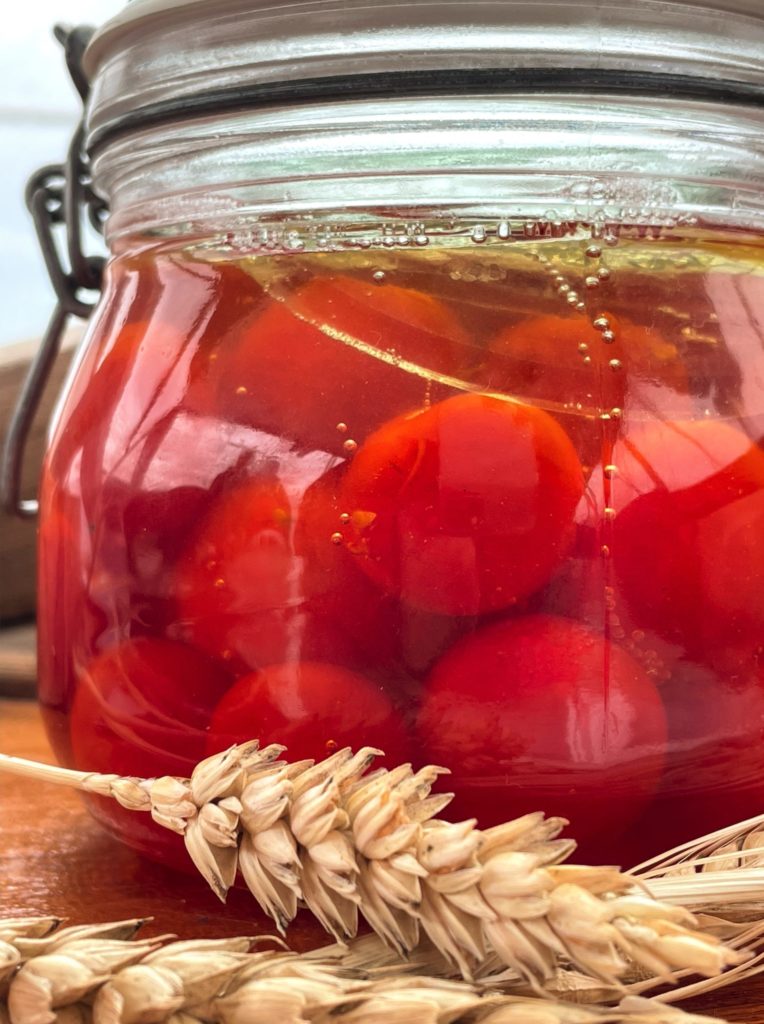
And what about botulism?
Honey has a naturally low pH value, so it is acidic, and the Clostridium botulinum bacterium cannot produce toxins in an acidic environment. It also needs an oxygen-free environment, so if you stir the ferment at the beginning, you are creating another hurdle.
Honey also has antibacterial properties that protect your ferments from being spoiled by other microbes.
Ideas how to eat tomatoes in honey
And how do the tomatoes taste best, you might ask? They are delicious on their own, perhaps with a buttered sandwich. They go fabulously with cheese, and children especially like them when pureed as a spread. The honey is great in dressings and marinades or as a base for vegetable ferments.
I also love a quiche with fermented honey tomatoes; I wrote the recipe down in my book »Die Fermenteküche«. For me, it's a perfect summer dish for those summer nights outdoors.

Sources
- Manisha Deb Mandal und Shyamapada Mandal: https://www.ncbi.nlm.nih.gov/pmc/articles/PMC3609166
- Chemie.de: https://www.chemie.de/lexikon/Alkoholische_G%C3%A4rung.html

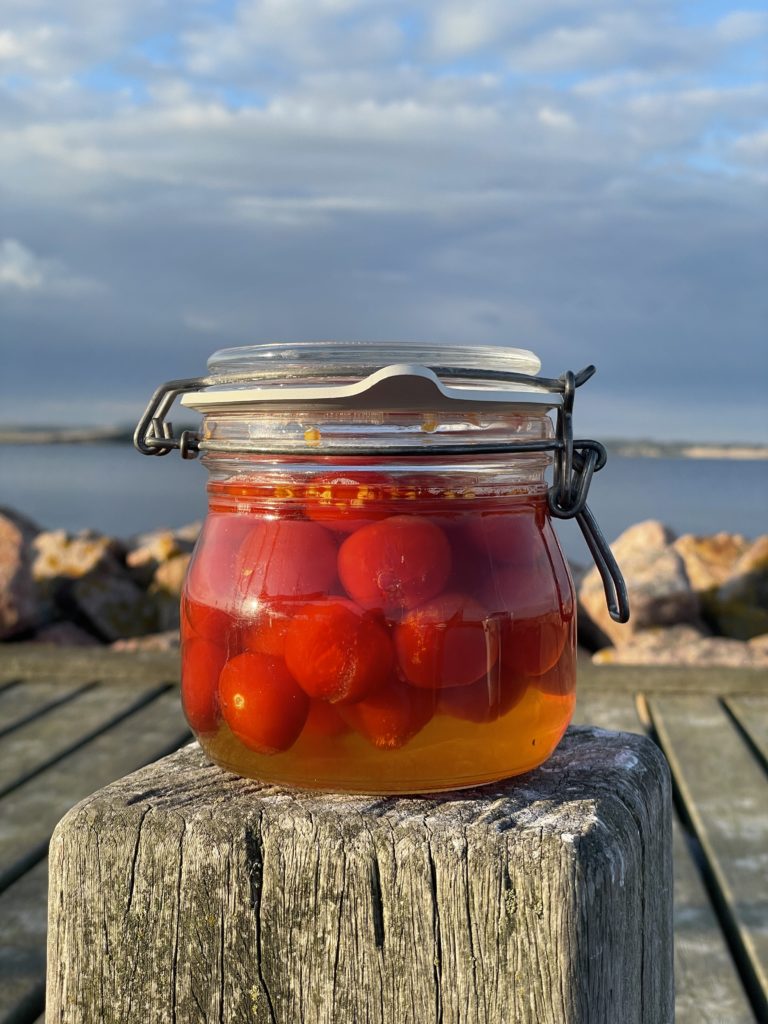
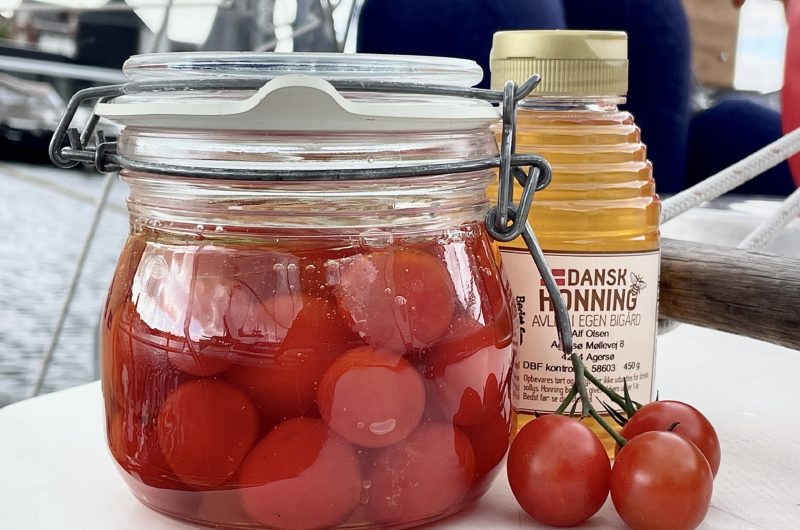
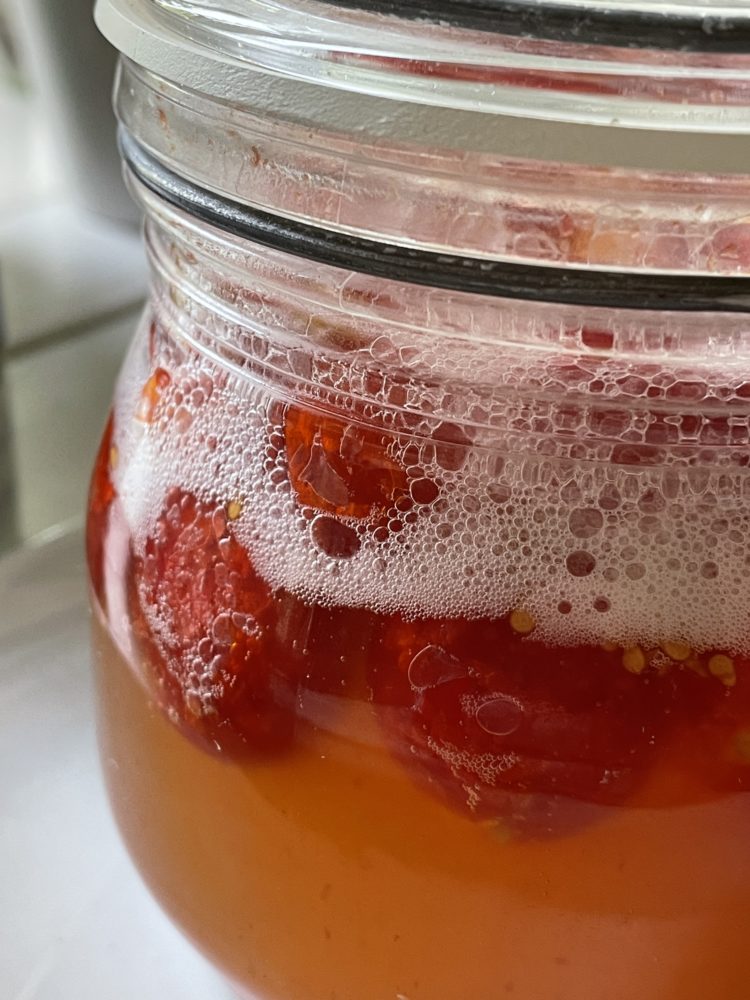
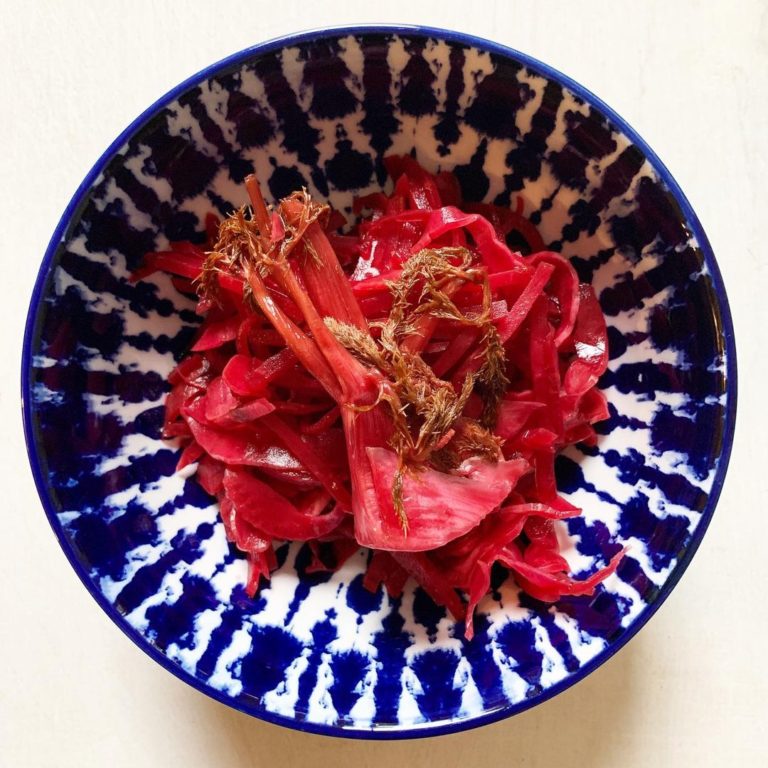
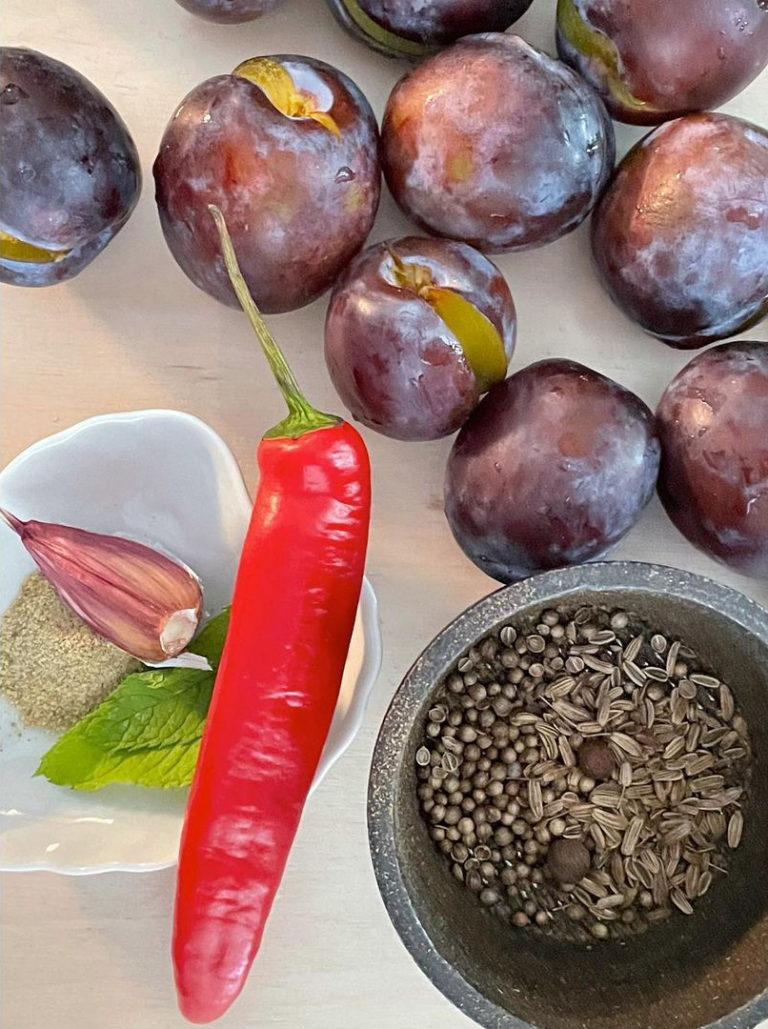
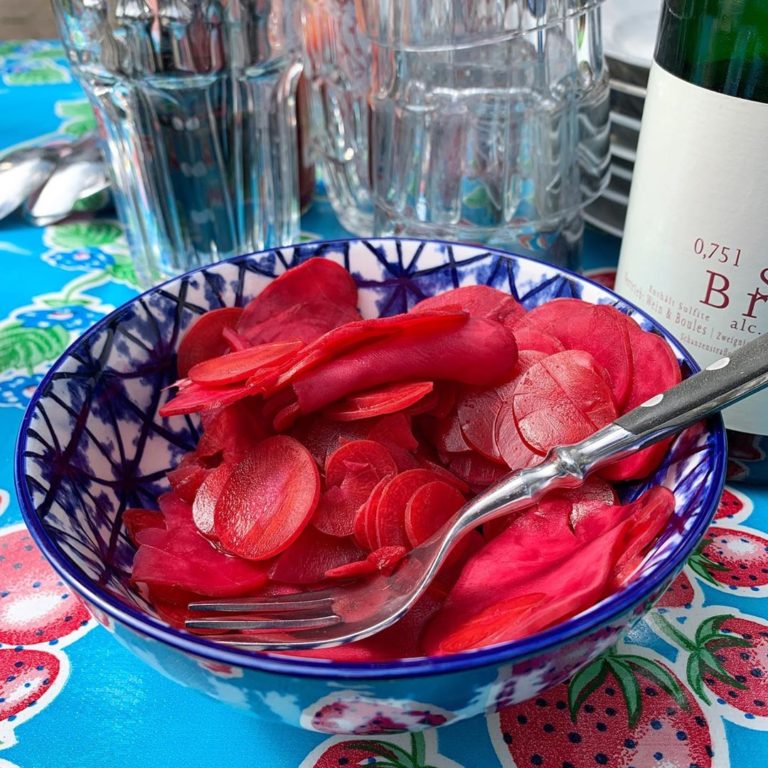
Was mache ich falsch? Tomaten genau so wie in deiner Beschreibung angepikst, guten Honig genommen und nach einer Woche tut sich gar nichts… ein bisschen Schäumchen an der Oberfläche aber lange nicht so wie auf deinem Bild. Habe halt Gläser mit Gäraufsatz. Ist das der Fehler? Ich rühre die Tomaten täglich um, Temperatur passt aber sie gehen auch nicht unter… Es ist der zweite Versuch und bei beiden das selbe…
Hej Imke,
durch den Gäraufsatz entweicht wahrscheinlich alles CO2, dann hast du nichts mehr im Glas. Ich weiss nicht genau, was für ein Gefäß du benutzt, aber ich empfehle Bügel- oder Einkochgläser. Alles andere ist unzuverlässig. Untergehen tun die Tomaten übrigens nicht.
Mein Tipp: benutze ein geeignetes Fermentiergefäß.
Gutes Gelingen!
Katsu
Hej Katsu,
falls ich Salz zu den Tomaten geben möchte: wann tue ich das? Sofort wenn ich Tomaten und Honig mische oder nach Start der Fermentation? Dann auch 2% vom Tomatengewicht oder egal?
Gruß, Sabine
Hej Sabine,
wenn du weniger Hefeaktivität möchtest, gib von Anfang an 2-3% Salz dazu, gemessen am Gewicht der Flüssigkeit. Ich würde dann auch noch 50-100 ml Wasser dazugeben, das dann bitte miteinrechnen.
Gutes Gelingen!
Katsu
Hoi Katsu
Ich habe das erste Mal mit Honig fermentiert und frage mich, welche weitere Verwendung ich für den fermentierten Honig nutzen könnte. Da ich eine grössere Menge verwendet habe, bleibt jetzt ziemlich viel Honig über. Ich denke, ich versuche ein Getränk daraus herzustellen. Vielleicht hast du da schon Ideen oder Tipps?
Auf jeden Fall bin ich grosser Fan deines Blogs, du machst das toll. Obwohl ich einige Erfahrung mit Fermentationen habe, habe ich neue Ideen dank des Blogs ausprobiert und bin begeistert.
Liebe Gruess us Lozärn
Hej Philippe, genau, in Cocktails oder Mocktails ist der Tomatenhonig unfassbar gut! Herzliche Grüße in die Schweiz, sehen wir uns bei meinem Workshop in Winterthur im November?